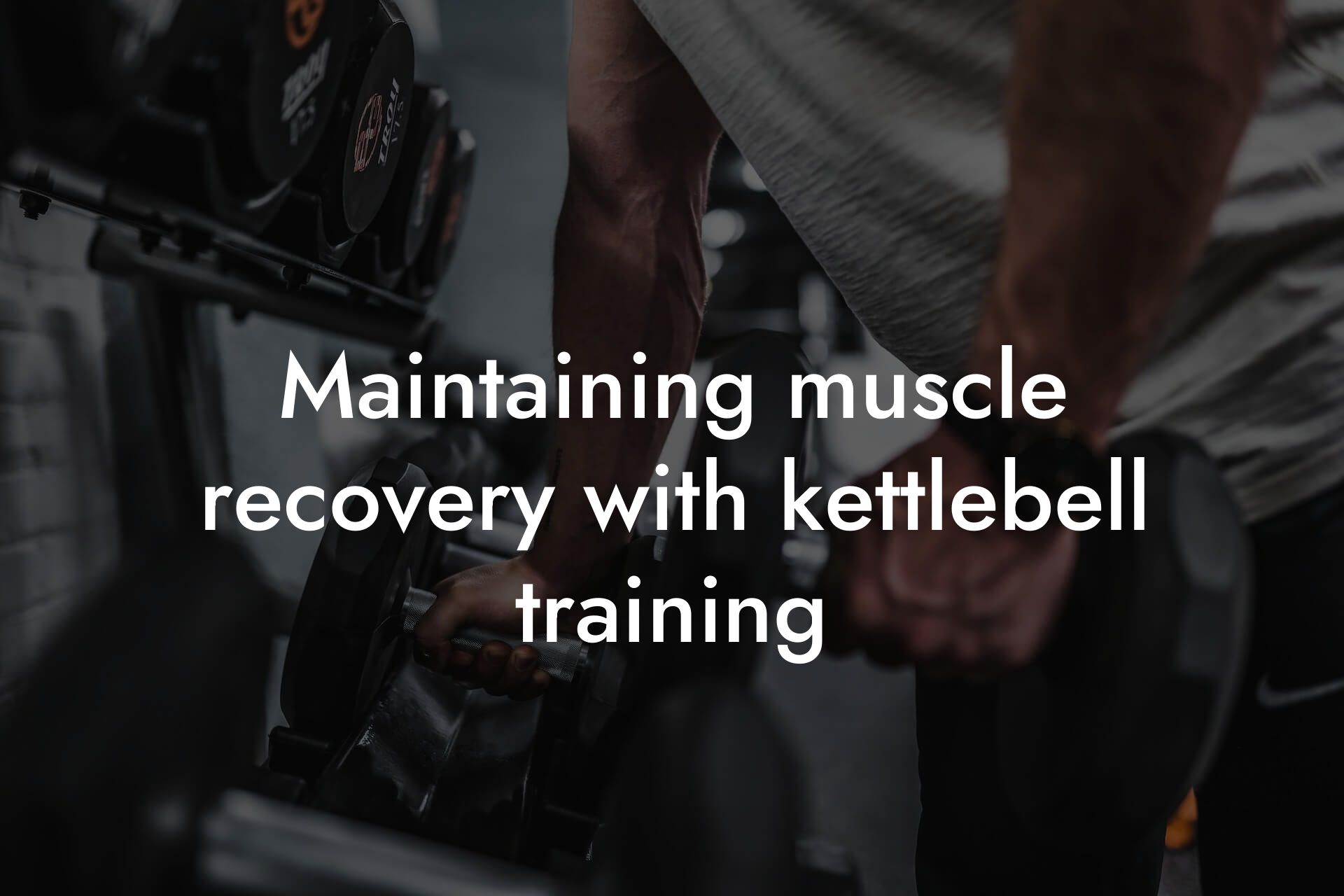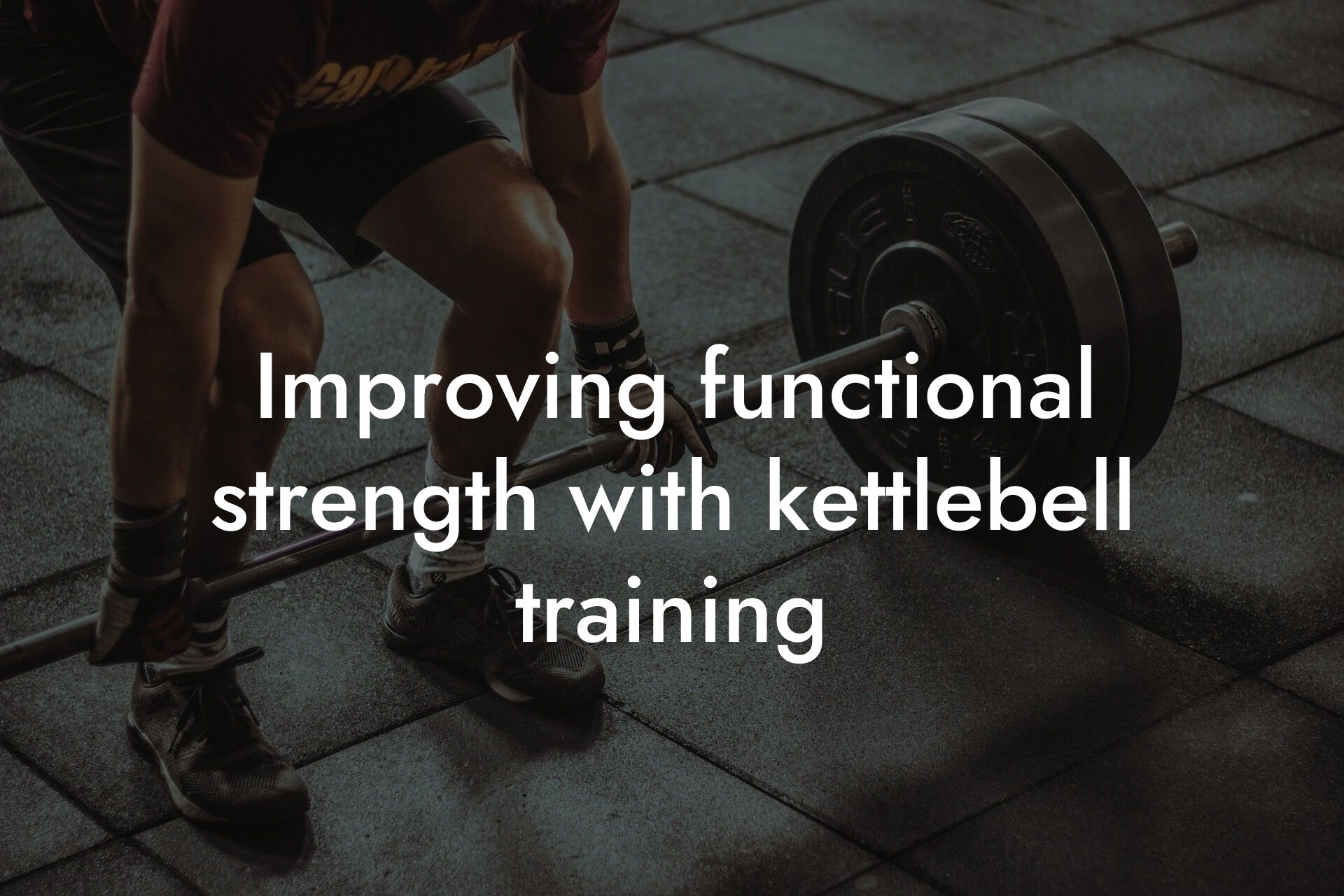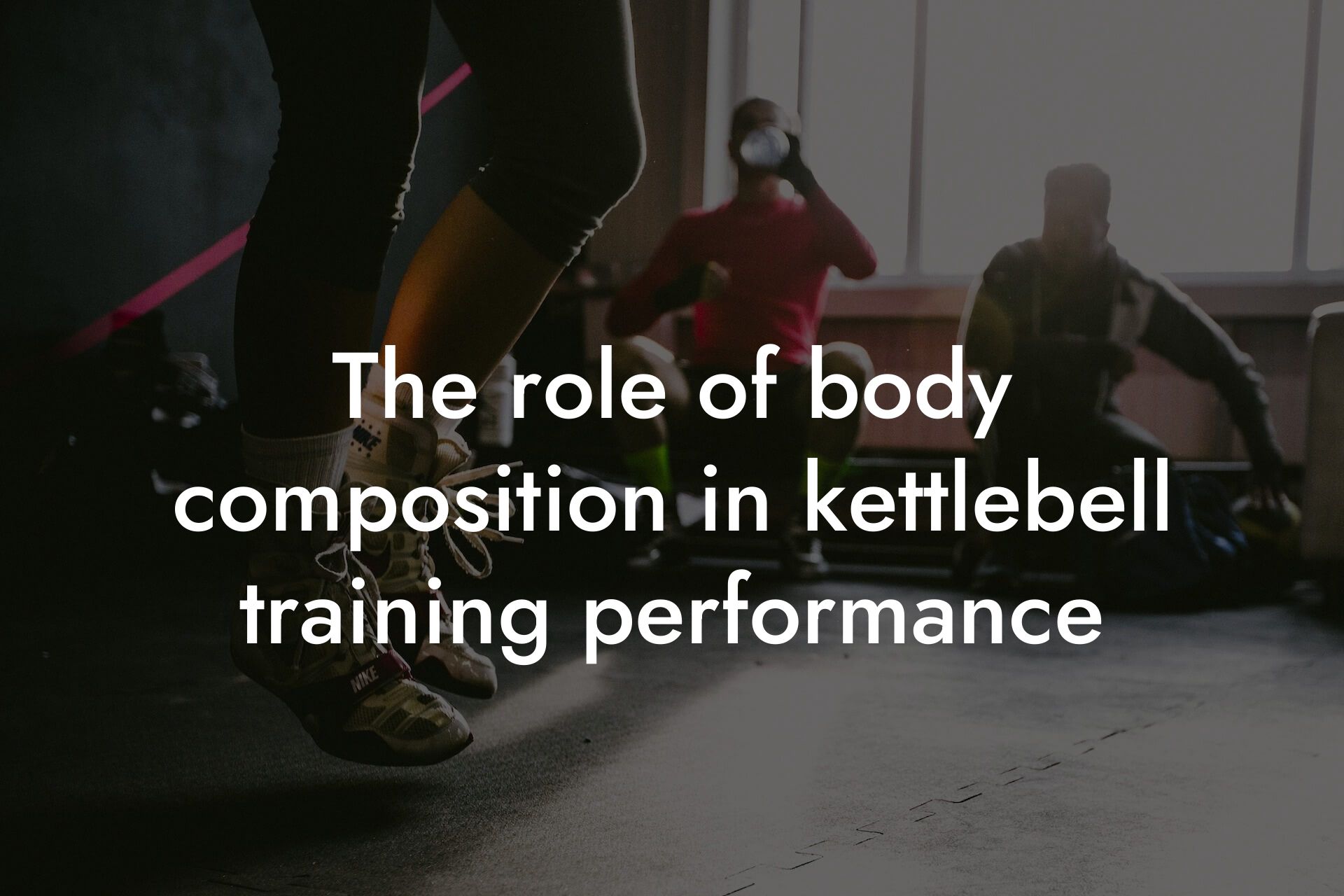As a high-earning professional, you understand the importance of maintaining a strong, lean, and agile physique. Kettlebell workouts are an excellent way to achieve this, but it's crucial to balance strength, speed, and flexibility to get the most out of your training. In this article, we'll delve into the world of kettlebell training and provide you with a comprehensive guide on how to strike the perfect balance between these three essential components.
Table of Contents
Understanding the Importance of Balance
When it comes to kettlebell workouts, many individuals focus solely on building strength, neglecting the importance of speed and flexibility. However, a well-rounded kettlebell program should incorporate all three elements to ensure optimal performance and reduce the risk of injury. Strength provides the foundation for power, speed enables you to move efficiently, and flexibility allows for a full range of motion.
The Benefits of Kettlebell Training
Kettlebell training offers a multitude of benefits, including:
- Improved strength and power
- Enhanced cardiovascular endurance
- Increased flexibility and mobility
- Improved coordination and balance
- Time-efficient workouts
- Functional strength that translates to everyday life
Assessing Your Current Fitness Level
Before diving into a kettlebell program, it's essential to assess your current fitness level. This will help you identify areas that need improvement and create a tailored workout plan. At Tano Performance Group, we recommend using a DEXA machine to provide a comprehensive body assessment, including body fat percentage, bone density, and lean muscle mass.
Building Strength with Kettlebells
When building strength with kettlebells, focus on exercises that work multiple muscle groups at once, such as:
- Swings: Works the hips, glutes, and hamstrings
- Goblet squats: Targets the legs, glutes, and core
- Deadlifts: Engages the entire back, legs, and core
- Presses: Develops strength in the shoulders and triceps
Aim to perform 3-5 sets of 8-12 reps for each exercise, using a weight that challenges you but still allows for proper form.
Incorporating Speed and Power
To develop speed and power, incorporate explosive movements into your kettlebell workout, such as:
- Snatches: Quickly switches between a swing and a clean, working the entire body
- Cleans: Focuses on rapid hip and leg drive, building power and speed
- Jerks: Develops explosive strength in the legs, hips, and shoulders
Aim to perform 3-5 sets of 6-10 reps for each exercise, using a weight that allows for quick and explosive movements.
Increasing Flexibility and Mobility
Flexibility and mobility are crucial components of a well-rounded kettlebell program. Incorporate exercises that focus on dynamic stretching and mobility, such as:
- Kettlebell windmills: Targets the shoulders, hips, and legs, improving flexibility and mobility
- Turkish get-ups: Works on hip and shoulder mobility, as well as core strength
- Kettlebell flows: Combines multiple exercises into a flowing movement, improving coordination and flexibility
Aim to perform 2-3 sets of 10-15 reps for each exercise, focusing on slow and controlled movements.
Creating a Balanced Kettlebell Workout Plan
To create a balanced kettlebell workout plan, aim to incorporate a mix of strength, speed, and flexibility exercises into your routine. A sample workout plan could look like this:
- Warm-up: 5-10 minutes of light cardio and dynamic stretching
- Strength: 3-4 exercises, 3-5 sets of 8-12 reps each
- Speed and power: 2-3 exercises, 3-5 sets of 6-10 reps each
- Flexibility and mobility: 2-3 exercises, 2-3 sets of 10-15 reps each
- Cool-down: 5-10 minutes of stretching and foam rolling
Balancing strength, speed, and flexibility is crucial for a well-rounded kettlebell workout. By incorporating a mix of exercises that target different aspects of fitness, you'll be able to improve your overall performance and reduce the risk of injury. Remember to assess your current fitness level, focus on proper form and technique, and create a balanced workout plan that suits your needs. With consistent practice and patience, you'll be able to achieve your fitness goals and take your physique to the next level.
Frequently Asked Questions
What is the importance of balancing strength, speed, and flexibility in kettlebell workouts?
Balancing strength, speed, and flexibility in kettlebell workouts is crucial for achieving overall fitness and preventing injuries. When you focus on one aspect alone, you may neglect other essential components, leading to imbalances and increased risk of injury. By incorporating all three elements, you'll develop a well-rounded fitness level, enhancing your performance and reducing the likelihood of setbacks.
How do kettlebell workouts improve strength?
Kettlebell workouts improve strength by engaging multiple muscle groups simultaneously, increasing overall muscle mass and power. The dynamic movements and weights used in kettlebell exercises, such as swings and cleans, challenge your muscles to work together, building functional strength that translates to everyday life and other physical activities.
What is the role of speed in kettlebell workouts?
Speed is an essential component of kettlebell workouts, as it enhances power, agility, and reaction time. By incorporating explosive movements, such as snatches and jerks, you'll improve your ability to generate force quickly, increasing your overall athleticism and functional fitness.
Why is flexibility important in kettlebell workouts?
Flexibility is crucial in kettlebell workouts, as it enables you to move efficiently and effectively, reducing the risk of injury and improving overall performance. Increased flexibility also allows for a greater range of motion, making it easier to perform complex movements and exercises.
How do I know if I'm balancing strength, speed, and flexibility correctly in my kettlebell workouts?
To ensure you're balancing strength, speed, and flexibility correctly, pay attention to your body and performance. If you notice improvements in one area but plateaus or declines in others, adjust your workout routine accordingly. Additionally, work with a qualified trainer or coach who can provide personalized feedback and guidance.
What are some common mistakes people make when trying to balance strength, speed, and flexibility in kettlebell workouts?
Common mistakes include focusing too much on one aspect, neglecting proper form and technique, and failing to incorporate exercises that target all three components. It's also essential to avoid overtraining and allow for adequate recovery time to prevent burnout and injury.
How often should I incorporate kettlebell workouts into my fitness routine?
The frequency of kettlebell workouts depends on your individual goals and fitness level. Aim to incorporate 2-3 kettlebell workouts per week, allowing for at least one day of rest in between. As you progress, you can increase the frequency and intensity of your workouts.
What are some essential kettlebell exercises for improving strength?
Some essential kettlebell exercises for improving strength include the goblet squat, deadlift, and clean and press. These exercises engage multiple muscle groups, building overall strength and power.
What are some essential kettlebell exercises for improving speed?
Some essential kettlebell exercises for improving speed include the snatch, jerk, and swing. These exercises require quick, explosive movements, enhancing your power and reaction time.
What are some essential kettlebell exercises for improving flexibility?
Some essential kettlebell exercises for improving flexibility include the Turkish get-up, windmill, and side lunge. These exercises require a range of motion, increasing your flexibility and mobility.
How do I choose the right kettlebell weight for my workouts?
Choose a kettlebell weight that allows you to maintain proper form and technique throughout the exercise. If you're new to kettlebell workouts, start with a lighter weight and gradually increase as you build strength and endurance.
What are some common injuries associated with kettlebell workouts, and how can I prevent them?
Common injuries associated with kettlebell workouts include back strain, shoulder injuries, and wrist sprains. To prevent these injuries, focus on proper form and technique, warm up thoroughly before each workout, and incorporate exercises that strengthen your core and stabilizer muscles.
Can I use kettlebell workouts to improve my overall athleticism?
Yes, kettlebell workouts are an excellent way to improve your overall athleticism, as they enhance strength, speed, power, and agility. By incorporating kettlebell exercises into your fitness routine, you'll see improvements in your performance in other sports and physical activities.
How do kettlebell workouts compare to traditional weightlifting?
Kettlebell workouts differ from traditional weightlifting in that they incorporate dynamic movements and weights, engaging multiple muscle groups simultaneously. This approach builds functional strength and power, whereas traditional weightlifting often focuses on isolated muscle groups.
Can I use kettlebell workouts to improve my bone density?
Yes, kettlebell workouts can help improve bone density, particularly in older adults. The dynamic movements and weights used in kettlebell exercises stimulate bone growth and density, reducing the risk of osteoporosis and fractures.
How do kettlebell workouts affect body fat percentage?
Kettlebell workouts can help reduce body fat percentage by increasing your metabolism and burning calories. The high-intensity nature of kettlebell exercises also enhances excess post-exercise oxygen consumption (EPOC), further aiding in fat loss.
Can I incorporate kettlebell workouts into my existing fitness routine?
Yes, kettlebell workouts can be incorporated into your existing fitness routine, providing a unique and challenging way to enhance your strength, speed, and flexibility. Start by replacing one or two traditional workouts with kettlebell workouts and adjust as needed.
What are some benefits of working with a personal trainer or coach who specializes in kettlebell workouts?
Working with a personal trainer or coach who specializes in kettlebell workouts can provide personalized guidance, correct form and technique, and help you achieve your fitness goals more efficiently. They can also create customized workout plans tailored to your needs and goals.
How do I know if I'm using proper form and technique in my kettlebell workouts?
To ensure you're using proper form and technique, focus on engaging your core and stabilizer muscles, keeping your back straight, and using your hips and legs to generate power. Additionally, work with a qualified trainer or coach who can provide feedback and guidance.
What are some common myths about kettlebell workouts?
Common myths about kettlebell workouts include the idea that they're only for advanced athletes, that they're too intense, or that they're only for building strength. In reality, kettlebell workouts can be adapted to suit all fitness levels, and they offer a comprehensive approach to fitness, improving strength, speed, and flexibility.
How do kettlebell workouts compare to other forms of exercise, such as running or yoga?
Kettlebell workouts offer a unique combination of strength, speed, and flexibility training, making them an excellent addition to any fitness routine. While running and yoga can provide cardiovascular benefits and flexibility, respectively, kettlebell workouts offer a more comprehensive approach to fitness.
Can I use kettlebell workouts to improve my overall physical appearance?
Yes, kettlebell workouts can help improve your overall physical appearance by building lean muscle mass, increasing metabolism, and enhancing body composition. As you progress, you'll notice improvements in your physique, including increased muscle definition and a more toned appearance.
How do kettlebell workouts affect my mental health and well-being?
Kettlebell workouts can have a profound impact on mental health and well-being, reducing stress and anxiety, and increasing confidence and self-esteem. The physical activity and sense of accomplishment can also boost mood and overall mental well-being.
Here are some related articles you might love...
- Maintaining muscle recovery with kettlebell training
- Improving functional strength with kettlebell training
- The role of body composition in kettlebell training performance
- Reducing body fat for better kettlebell workout results
- The importance of bone density in kettlebell fitness
- Nutrition strategies for kettlebell enthusiasts
- Strength training tips specific to kettlebell exercises
- How DEXA scans can benefit kettlebell training athletes
Zak Faulkner
Zak Faulkner is a leading authority in the realm of physical health and body composition analysis, with over 15 years of experience helping professionals optimise their fitness and well-being. As one the experts behind Tano Performance Group, Zak has dedicated his career to providing in-depth, science-backed insights that empower clients to elevate their physical performance and overall health.
With extensive knowledge of DEXA technology, Zak specializes in delivering comprehensive body assessments that offer precise data on body fat, muscle mass, bone density, and overall physique. His expertise enables individuals to make informed decisions and achieve their fitness goals with accuracy and confidence. Zak’s approach is rooted in a deep understanding of human physiology, combined with a passion for helping clients unlock their full potential through personalised strategies.
Over the years, Zak has earned a reputation for his commitment to excellence, precision, and client-focused service. His guidance is trusted by top professionals who demand the best when it comes to their health. Whether advising on fitness programs, nutritional strategies, or long-term wellness plans, Zak Faulkner’s insights are a valuable resource for anyone serious about taking their health and fitness to the next level.
At Tano Performance Group, Zak continues to lead our Content Team revolutionising how professionals approach their physical health, offering unparalleled expertise that drives real results.




